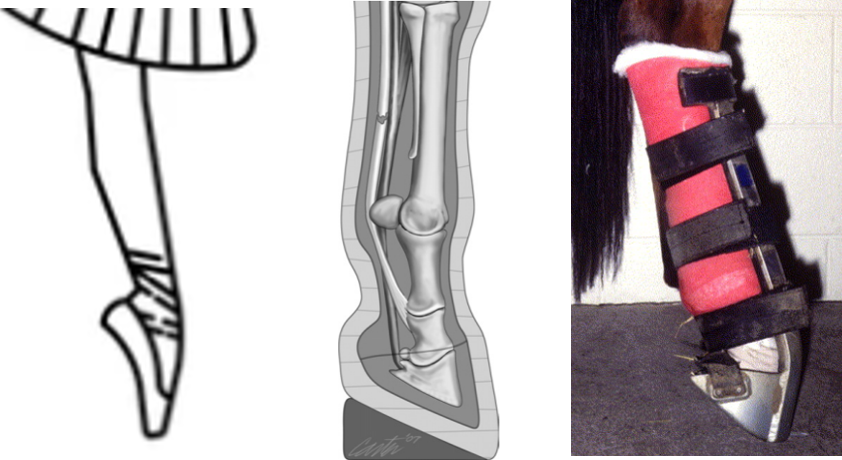LA Orthopedic Emergencies
Tendon and ligament injuries
Extensor tendons
Extensor tendon lacerations and ruptures heal well without significant intervention. The limb may need to be splinted until the horse learns how to flip the foot forward and can avoid knuckling. Otherwise, regular wound management is all that is required.
Flexor tendons
Flexor tendon lacerations or ruptures can be career ending due to poor healing. Tendons do not return to normal structure but maintain variable amounts of scar tissue within the injured area. Scar tissue is unable to stretch properly and often tears, leading to reinjury. Chronic injury may also lead to calcification of the tendon, further minimizing stretch.
Partial lacerations carry the best prognosis. It is important to keep these from becoming complete tendon lacerations. This requires immediate support to prevent full weight bearing. As the flexor tendons are most stretched with weight bearing, the animal is splinted so that it is standing on its toe and with the dorsal cortices aligned. This resembles a ballet dancer on their toes.

This position can be stabilized with a dorsal splint, casting material or Kimzey leg saver splint.
Complete lacerations should be similarly stabilized for animal comfort. Surgical repair has not been found to change success rates. Suture repair is difficult and results in significant foreign body reaction. Healing is slow and often regresses as the horse uses the limb. Special shoeing and bandaging are required. In a large retrospective study, only 55% of horses with tendon lacerations were able to return to intended use and 18% were euthanized. Lacerations within the tendon sheath seem to heal particularly poorly, likely related to the poor vascularity.
Key Takeaways
Tendon lacerations can become worse with weight bearing; apply a dorsal splint that aligns the dorsal cortices
Suturing may not help; repair takes awhile and may not be sufficient for the horse to return to performance
Resources
Tendon and ligament injury chapter
Outcome after Lacerations of the Superficial and Deep Digital Flexor Tendons, Suspensory Ligament and/or Distal Sesamoidean Ligaments in 106 Horses. Jordana M et al. 2011 Veterinary Surgery 40(3):277 – 283
Healing Characteristics of Deep Digital Flexor Tenorrhaphy Within the Digital Sheath of Horses. Jann H et al. 2003 Veterinary Surgery 32(5):421-30.

